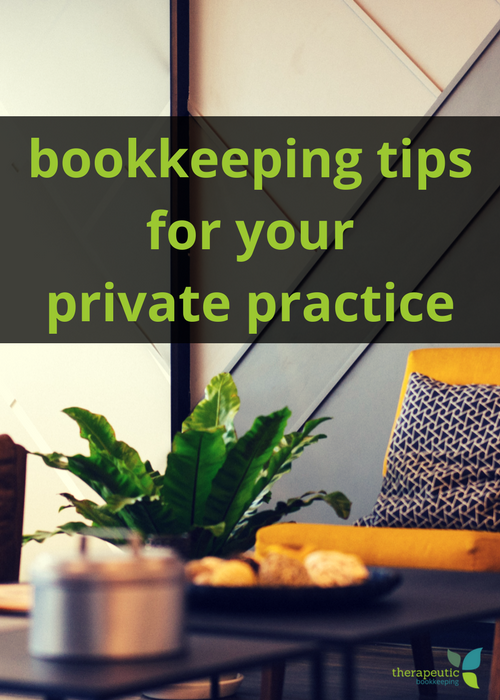When you first opened your private practice, you probably didn’t anticipate the amount of time you would have to spend on the business itself. Don’t worry; this is an extremely common occurrence not just among private practitioners but small business owners in general. Bookkeeping takes time! LOTS of it.
It’s also extremely important for the health of your business. Without proper bookkeeping, focus on revenue and profits, and an idea of cash flow, unpleasant surprises can occur (hello, IRS), important paperwork forgotten, and your vision of your dream private practice could become cloudy! The good news? All the negative things are easily avoidable with a few simple bookkeeping and business tips and a little time and preparation.
As always, reach out to a qualified tax professional (or schedule with our CPA) regarding your specific situation and feel free to apply to work with us to discuss our professional bookkeeping services and how we can help!
- Keep your personal and business finances separate. This alone will make your private practice bookkeeping so much easier! Set up separate bank accounts and credit cards specifically for your private practice. When personal and business expenses start to get entangled, bookkeeping becomes difficult and tax time becomes expensive.
- Setup automatic imports from your credit card and bank statements into your bookkeeping software. Not only will your expenses be accurate and tracked, you’ll save time by not having to manually import all of your practice expenses. (Wondering what accounting software is best for your private practice? Read my article about my recommendations HERE!)
- Utilize an app to capture your receipts. Don’t miss out on potential tax write-offs and deductions for your private practice due to lost receipts. Snap a picture immediately after receiving! (Click HERE to learn about my favorite receipt management app!)
- Set aside money for taxes. Set aside money to pay your quarterly estimated taxes. Not only is it a requirement of the IRS, but by paying quarterly estimates, you’ll reduce your amount due to Uncle Sam come tax day! Many small business owners think of money in the bank as theirs to keep, but unlike a typical paycheck, taxes aren’t remitted from the services income you generate. It is your responsibility to set that money aside and file quarterly, and I highly recommend you work with your tax professional throughout the year on Tax Projections and Planning!
- Reconcile your account statements monthly. Consider setting aside time weekly to review your statements and track your expenses either in my spreadsheet for therapists or in your accounting software. Reconcile your bank and credit card account statements to ensure nothing is forgotten. If paperwork never ceases and you’re losing your focus on your practice and passion, you may want to consider outsourcing your bookkeeping to a professional like us at Therapeutic Bookkeeping!
- Keep an eye on your cash flow. Do you keep your clients’ billing method on file and use your EHR/EMR to automatically bill your clients after each session? If you don’t – I highly recommend you put these processes into place for your private practice! This way, you can ensure you’re paid on time, every time. Also, consider a late cancellation policy that states you will automatically charge the clients billing method on file if they do not cancel an appointment within ‘x’ amount of time. Common practice for therapists is within 24 – 48 hours and a one time ‘freebie’. Then stick to this policy! I know it’s not fun and it can be hard – but imagine what it would do to your cash flow if you had 7 clients cancel in 1 week without proper notice so you couldn’t fill those appointment slots back up and you didn’t charge them a late cancellation fee…!
We hope these bookkeeping & biz tips help you and your private practice!!
Therapeutic Bookkeeping is a virtual accounting firm working exclusively with therapists all across the United States providing bookkeeping and accounting services!





